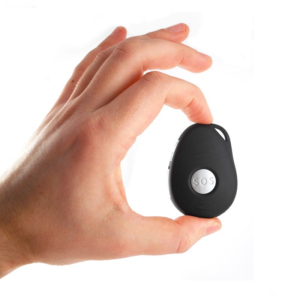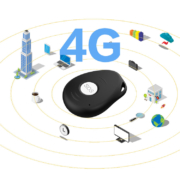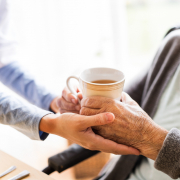Have you ever sat in the cockpit of a plane? Or perhaps you can picture a movie scene of a pilot sitting in the chair, flicking on switches, turning knobs, preparing for take-off.
As an outsider, someone who isn’t a pilot, your reaction to looking at the dashboard of a plane is probably something of overwhelm. What do all those buttons, knobs, lights, and screens even mean? How can anyone make sense of this?!
If you ever were sat down in front of this dashboard and told to operate it, you probably wouldn’t even know where to begin.
Well, for many seniors, this is the experience of using a computer or tablet or smartphone.
Technology is a wonderful tool. This year has shown us the amazing ways that the internet and all these gadgets can not only keep us connected but also keep us working and learning.
However, many seniors haven’t taken advantage of these benefits of technology because the learning curve is so steep. What is disheartening about this is that right now seniors are the population most in need of new ways to stay in touch with friends and family.
The outlook doesn’t have to be so bleak, however, because it is possible for seniors to learn how to use technology and thus stay in touch with the people who love them.
If you have a senior in your life who lives alone or lives further away or who simply doesn’t want to go out or have visitors right now, here are tips for teaching them how to use technology.
- Keep it simple.
While you may enjoy replying to emails, setting your fantasy lineup for the week, checking the weather, and crushing candy to pass time all on your phone, your senior loved one probably doesn’t need to do all those things.
When you are selecting a device for them, keep it simple. It’s better to go with a device that does a core set of functionality well and is reliable over one that can do everything but is more complicated. The main things that a senior might want to do with a device are make video calls, receive pictures, listen to music, and play basic games. Making and receiving video calls is probably the most important, so focus on that and find a device that can use a software that is very straightforward.
- Don’t assume anything.
The number one mistake people make when teaching a senior to use technology is that they assume a base level of technical knowledge. For people who have used computers for years, or even their whole life, they forget that it’s not just “second nature”, it’s something they learned.
Even something as “basic” as how to use a mouse might need to be explained. Some other commonly mistaken “second nature” understandings about devices are:
- Overlapping windows. When a new screen appears, it’s not always understood that other screens are below it.
- Nested menus. The fact that there are more options listed under the word “File” might have to be explained.
- Power off versus sleep mode. This is important if you want your senior to be able to receive calls, which means the device has to be on. Many seniors will assume they need to turn it all the way off to preserve battery life.
- Storage. Be sure to explain how they can access and use different things on the device, such as pictures or word documents.
The key is to ask if they are understanding and to keep things in everyday terms. Analogies will be very helpful in explaining these new concepts.
- Be mindful of physical differences.
The thing about aging is that it affects both the mind and body. Many seniors struggle with using their fingers due to arthritis or other diseases. A touchscreen device may not be best because maybe their hand shakes or they don’t have enough strength to hold up their arm. A more traditional computer with a mouse might be better.
Hearing is another area to consider. If they use hearing aids, be mindful of the levels and frequencies of sound coming from the device. Ask the senior if it sounds okay for them.
- Have patience.
Above all, it’s important to have patience. It might be frustrating to have to explain something multiple times and on multiple occasions. If you feel yourself getting agitated, just remember the plane’s dashboard and consider how long it would take you to understand that.
You are probably busy and have errands to run or work to do, but just remember the benefits of what you’re enabling them to do. You’re giving them access to a whole new world. Loneliness is not just an emotional concern, but it can also lead to other significant health issues in seniors. By empowering them to use technology, you are enriching their life and increasing their overall well-being.
If you have a senior living alone or far away, it’s likely that you feel concerned about their safety. To help reduce risks and increase safety in their living space, you can also use our Senior At-Home Safety Checklist. Our free comprehensive home safety checklist will help you systematically go through each area of the home to check for common hazards and make sure the proper safety measures are in place.
Download this checklist once and use it over again periodically to make sure your loved one’s home stays as safe as possible.




